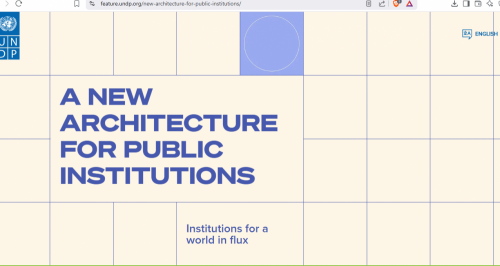
https://feature.undp.org/new-architecture-for-public-institutions/
Institutions are having a moment of reckoning.
The world is at a critical moment. Convergence of crises – political, ecological, social and economic – place great pressure on governments and societies. Existing institutions, largely designed when the world was a very different place, are struggling to provide adequate responses. This is particularly true of new pressures of insecurity – from disruption to supply chains and securitization of societies, threats of new pandemics, war and conflict, misinformation and cybersecurity – to name a few. The 2023/24 Human Development Report calls for a rethinking of institutions to make them more people-centred, inclusive and future-oriented.

“We cannot effectively address problems as they are if institutions don’t reflect the world as it is. Instead of solving problems, they risk becoming part of the problem.”– António Guterres, United Nations Secretary-General
It follows that new risks, and a changing nature of old ones (where policy issues are more interconnected, compounding one another in ways that are difficult to predict and that straddle sectors and disciplines), will often require new institutions too – and that a period of profound transitions is bound to need institutions suited to navigating new challenges. Without renewing the current stock of institutions capable of harnessing collective intelligence, driving seamless collaboration across different constituents and enabling greater agility in face of constant changes, the world runs a risk of retreat into more siloed self protection and growing inequality.









